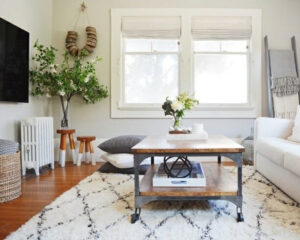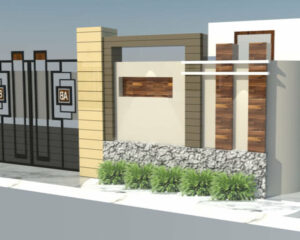LIVING ROOM RENOVATION:
Renovating a living room can be an exciting project that allows you to enhance the aesthetics, functionality, and comfort of one of the most central spaces in your home. Determine your budget early on. This will guide your decisions and help you prioritize where to allocate funds. Consider a contingency fund for unexpected expenses that may arise during the renovation. Assess the current layout and identify any structural changes needed. Consider the flow of the room and how different areas (seating, entertainment, etc.) will be arranged. Update flooring for a fresh look. Options include hardwood, laminate, carpet, or tile.
EXTENSION OF AREAS:
Expanding or extending areas within a home can be a transformative project, providing more space and potentially increasing the overall value of the property. Evaluate the current layout of your home and identify areas that need expansion. Consider the practicality and feasibility of expanding specific rooms or adding new ones. Check with local authorities to understand zoning laws, building codes, and permit requirements for home expansions. Ensure compliance with regulations to avoid legal issues during and after the construction process. Consider adding rooms such as an extra bedroom, a home office, a sunroom, or a guest suite. Explore the possibility of expanding vertically by adding a second story.
COMPOUND WALL CONSTRUCTION:
Compound wall construction is a vital aspect of securing and defining the boundaries of a property. Typically made from materials like brick, concrete, or stone, the construction of a compound wall serves multiple purposes. It provides privacy, security, and a visual demarcation of property lines. The design and height of the wall are often influenced by aesthetic preferences, local regulations, and the intended level of security. Proper foundation preparation is essential for stability, and the inclusion of features such as gates, lighting, or landscaping can enhance both functionality and curb appeal. Additionally, the construction of a compound wall involves meticulous planning to account for factors such as terrain, drainage, and soil conditions.
RESTAURANT RENOVATION:
Restaurant renovation is a strategic endeavor aimed at revitalizing the ambiance, functionality, and overall appeal of a dining establishment. This process involves careful planning to address both aesthetic and practical aspects. Interior design considerations such as updated seating arrangements, modern decor, and ambient lighting can enhance the overall dining experience. Renovating the kitchen area may involve upgrading equipment, optimizing workflow, and ensuring compliance with health and safety standards. Attention to technology integration, like point-of-sale systems or online ordering capabilities, is also crucial to meet evolving customer expectations.
BATHROOM RENOVATION:
Bathroom renovation is a transformative process that involves revamping both the aesthetic and functional aspects of this essential space. The project often begins with a careful assessment of the existing layout, fixtures, and plumbing. Upgrading fixtures such as sinks, faucets, and showerheads not only enhances functionality but also introduces contemporary design elements. The choice of materials, such as tiles and countertops, plays a crucial role in creating a cohesive and visually appealing atmosphere. Improvements in lighting, ventilation, and storage solutions contribute to a more comfortable and efficient bathroom. Additionally, modern energy-efficient features, like low-flow toilets and LED lighting, are often incorporated for sustainability.
KITCHEN RENOVATION:
FULL HOME RENOVATION:
Embarking on a full home renovation is a comprehensive endeavor that involves a holistic transformation of every aspect of a residence. This multifaceted project encompasses structural changes, aesthetic upgrades, and functional improvements throughout the entire living space. From reimagining floor plans to updating electrical systems and plumbing, a full home renovation addresses both the visible and underlying elements of the property. The process typically begins with careful planning and design considerations, taking into account the homeowner’s preferences, lifestyle needs, and the overall vision for the space. Upgrading flooring, walls, lighting fixtures, and incorporating modern technologies.








